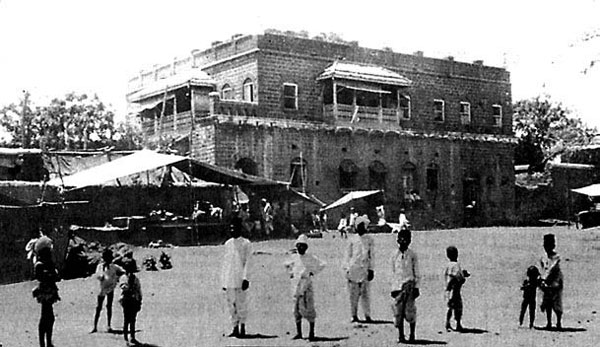
The wada was originally intended as a resthouse and mandir. The inspiration for the building came to Booty in a dream, when he was sleeping beside his friend and fellow devotee, Shama. Baba appeared and told him to build a house and temple. Excited by his vision, Booty immediately woke up and pondered its significance. He noticed that Shama had tears in his eyes and asked him what the matter was. It transpired that Shama had just had the same dream and was deeply touched by it. He told Booty, "Baba came near me and said distinctly, 'Let there be a wada with a temple so that I can satisfy the desires of all.'" Together they then drew up some rough sketches, showed them to Kakasaheb Dixit for approval, then took them straightaway to Baba to ask his permission to go ahead with the plan. Baba responded warmly and gave his blessings to the project.
The work was begun around 1915. It was built in stone and was therefore known as dagadi (stone) wada. Shama supervised the construction of the basement, ground floor and well. Later, Bapusaheb Jog took over supervising the work. When Baba passed the site on his way to Lendi, he would sometimes offer suggestions. As the building progressed, Booty asked Baba if he could include a temple on the ground floor with a statue of Murlidhar (a form of Krishna). Baba readily gave permission and said, "When the temple is built, we shall inhabit it and ever afterwards live in joy." Shama then asked Baba if that moment was an auspicious time to start the work and Baba replied that it was. Shama immediately fetched and broke a coconut and the work was begun. The foundation was quickly laid, a pedestal prepared and an order placed for the idol. However, the significance of Baba's comment was not appreciated until a few years later.



